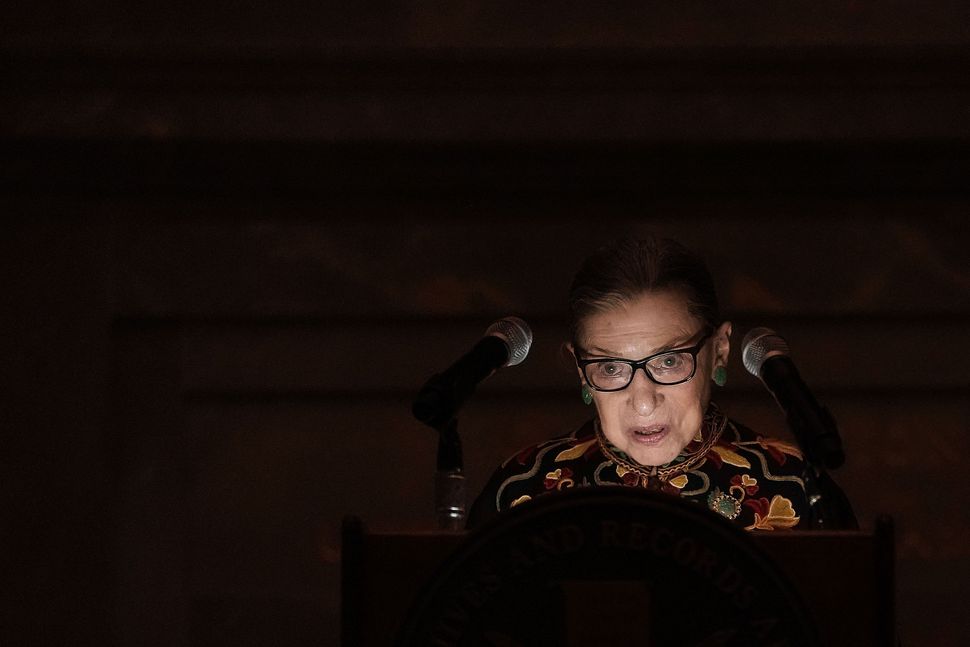The right way to mourn Ruth Bader Ginsburg

Ruth Bader Ginsburg Image by Getty Images
The way to mourn Ruth Bader Ginsburg is to embody her multitude of qualities, and take them forward into a certain struggle
Ginsburg, who died at 87 on Friday, the eve of the Jewish New Year, did not come by her icon status quickly or easily. It was built, year after year, decision after decision, in her fight for equal rights, for voting rights, for a country that heals past injustices and moves to prevent new ones.
She was forced to develop some of those qualities as a woman fighting in a man’s world. Though she was in the top of her class at Harvard Law School – and then Columbia when she followed her husband to New York for a job – Ginsburg did not get a single job offer from a top law firm. Yet she persisted.
And some of those qualities were shaped by her heritage.
“I grew up in the shadow of World War II,” she said in a public discussion with former Forward editor-in-chief Jane Eisner. “And we came to know more and more what was happening to the Jews in Europe. The sense of being an outsider — of being one of the people who had suffered oppression for no … no sensible reason … it’s the sense of being part of a minority. It makes you more empathetic to other people who are not insiders, who are outsiders.”
To empathize with those outside when you are on the inside is the core challenge of a just, sustainable society. Ginsburg devoted her life to it. Those who see her death as an opportunity may live to regret what an America without RBG will become.
But if I were to pick one quality of Ginsburg’s that is needed more than any other at this moment, it is her to-the-bone understanding that dissent is not futile. The Supreme Court has moved further to the right since President Bill Clinton nominated her in 1993. That meant Ginsburg was often in the minority, where her only option was to write dissenting opinions.
In the documentary “RBG” the filmmakers chronicle how she made her systematic legal case for equal rights patiently, persistently, over a period of years, until she saw much of what she fought for come to fruition.
In the 2007 Ledbetter v. Goodyear Tire and Rubber Co. decision, the Supreme Court ruled 5-4 that workers cannot sue their employers over unequal pay that they contend was caused by discrimination in prior years.
That did not sit well with Ginsburg, who read her dissent from the bench.
“In our view,” she said, “the court does not comprehend, or is indifferent to, the insidious way in which women can be victims of pay discrimination.”
At the time, the words had zero effect. But two years later, after the election of President Barack Obama, Ginsburg’s argument led to the Lilly Ledbetter Fair Pay Act, which the president signed into law, a clear victory in her struggle.
There are, of course, struggles to come. The immediate one will be over Ginsburg’s replacement on the court. It’s a decision that will affect the course of the United States for generations. The idea that a someone who may be opposite to Ginsburg’s qualities and convictions could be hurried through the Senate without due deliberation is equal parts depressing and enraging.
The only salve is Ginsburg herself. Dissent is not for naught. The battle for justice has a thousand skirmishes. And those who cherish the memory of Ruth Bader Ginsburg will bring all her qualities to the fight.
May her memory be for a blessing.
Rob Eshman is National Editor of the Forward.

















